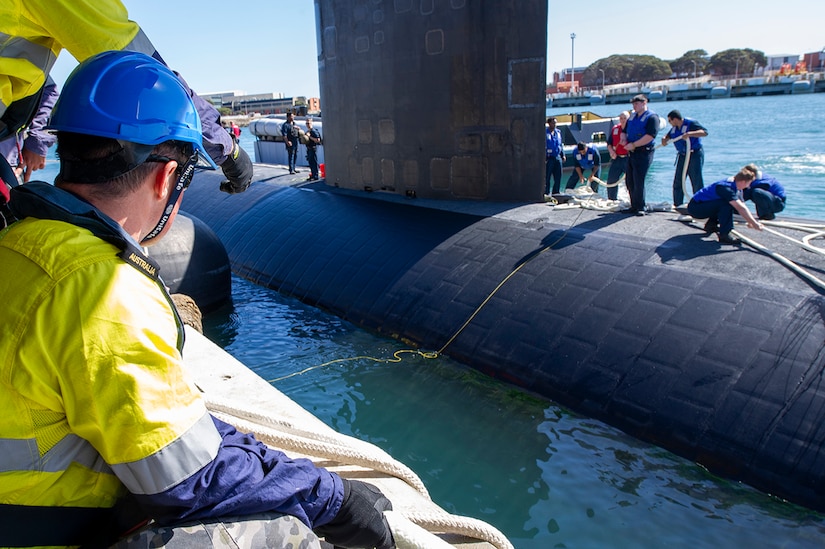The U.S., U.K. and Australia are focused on a deliberate, conditions-based approach to ensuring successful implementation of the AUKUS security partnership, the U.S. Navy’s top submarine warfare officer said yesterday.
The partnership, which was agreed to in September 2021, is aimed at fostering technology exchanges between the three countries and building Australia’s nuclear-powered submarine force.
Under “Pillar 1” of the plan, Australia will purchase three Virginia-class, conventionally armed, nuclear-powered submarines in time to replace its current fleet of diesel electric subs in the 2030s.
The three countries will also develop a state-of-the-art platform designed to combine and leverage their shared submarine technology. The “SSN-AUKUS” as the future platform is known, is slated to be fielded by the U.K. in the 2030s and by Australia in the 2040s.
Navy Vice Adm. Robert M. Gaucher, commander of U.S. Naval Submarine Forces, said that key to a successful rollout of the first pillar is taking measured steps to develop Australia’s nuclear submarine forces side-by-side with the U.S.
“They can take advantage of our training resources, and then they can go out and ride along on our submarines while they’re building up their knowledge and experience in the entire spectrum on maintenance training operations to be ready,” he said during a panel discussion at Sea-Air-Space 2024, an exposition hosted by the Navy League at National Harbor, Maryland.
The U.S. will begin operating Virginia-class submarines out of Australia as part of Submarine Rotational Force – West, slated as early as 2027. As part of that endeavor, Australian forces will begin learning and operating on U.S. submarines as they continue to develop their forces.
Gaucher said once Australia receives its first Virginia-class submarine, its operators will already have ample experience operating on the platform.
“It’s a very deliberate pace, very steady,” he said. “If there’s a problem they can phone home, we can help solve it along the way. And then as they build up their experience operating on nuclear submarines, then we get to the point where the first AUKUS submarine comes online.”
He noted that by the time the Australia is slated to field the AUKUS-class submarines, its forces will have a decade of experience operating the nuclear-powered Virginia-class submarine.
“Along the way, if we slip a year or if we accelerate a year, we have those options, depending on what’s going on,” he said. “But the key there is conditions-based, so that when the conditions are right, we’ll move to the next phase.”
Gaucher was joined during the panel discussion by Vice Adm. Martin Connell, the U.K. Royal Navy’s second sea lord, and Pat Conroy, Australian minister for defense industry, in underscoring the mutual strategic benefits for each country enabled by the AUKUS agreement.
“I look at interoperability between the United Kingdom, Australia and United States as seamless and ever changing,” Gaucher said.
He said AUKUS builds upon the that interoperability — forged by decades of alliance — by expanding the three countries’ combined operational footprint, expanding maintenance capacity between the three countries and bolstering their industrial bases.
“It’s a win-win situation for the United States, Australia and the United Kingdom,” he said.









